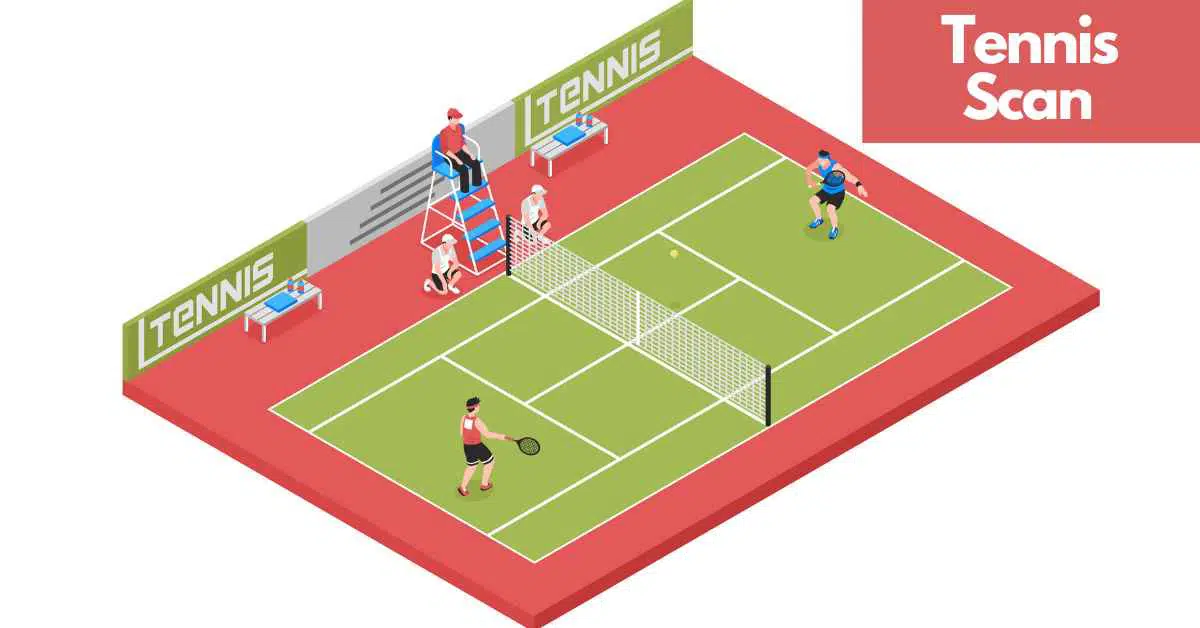When a tennis tournament takes place, it is always a match between two players. The outcome of the match is determined by the regulations adopted by the players and umpires, who make judgments based on the scoreboard. The line and chair umpires play a major role in this. They must exercise extreme caution while making match decisions.
Before you begin studying how to become a tennis umpire, make sure you understand the difference between an umpire and a referee. A referee in tennis can make any rule decision, whereas an umpire cannot. Tennis umpires with experience must keep a tight eye on the action for the players to put up their best effort.
Professional tennis umpires must be in top shape to make a match efficient. Making rapid and precise decisions is also critical. Before you may officiate a match as a tennis umpire, you must complete a set of training classes.
Types of Tennis Umpire
On the tennis court, there are usually two tennis umpires named the line umpire and the chair umpire. Line umpires are sometimes known as line judges. The line umpire’s job is to call the ball in and out from the line. After the shot has dropped in the court, the line umpire must make a fast judgment.
Line Umpire:
A one-day line umpiring course must be completed before the appointment of a line umpire. This course is a composition of on-court and on-the-spot efficiency, with a pass/fail outcome. To become a line umpire, you’ll need the following abilities:
- It is necessary to have 20/20 eyesight.
- The line umpire, like Maria Sharapova, should have a unique aptitude.
- A good time reaction is also an essential skill for a line umpire. When the ball hits the ground, be patient.
- You must have a cool demeanor to keep the game setting enjoyable. When players get into confrontations with the umpire, you must remain calm and polite to the players.
- Keep a close watch on the game and stay focused.
- It’s called swearing, so don’t break the rules. As a line umpire, you must be able to recognize swear words in any language.
Chair Umpire:

The chair umpire is in charge of judging the line umpire’s directions, which he calls on the court. In a nutshell, the observation is done to see if the players obey all of the rules and if the game is played fairly.
The chair umpire’s responsibilities include:
- Conducting the toss and selecting the player who will take the first shot.
- He delivers the score that the line umpire recommended.
- He has the authority to overturn line umpire decisions.
- He keeps track of time, points, and game rules for two players.
You can register for line umpire when you’re 16, but after you’ve approved for line umpire, it’s easy to proceed to a chair umpire seat, which comes with greater perks. Sagar Kashyap is an Indian umpire who became the chair umpire at Wimbledon at the age of 22. Umpires at Wimbledon are normally not compensated, thus you must cover your expenditures. It’s an honor rather than a profession.
Roving Umpire:
The roving umpire’s job is similar to that of the chair umpire. In most cases, these umpires are assigned to a maximum of six courts. They can’t be allotted anything else. The roving umpire was given information on the game, rest times, warm-up time, ball use, ball change, and numerous sets by the referee.
You must have the following items deliver your best services as a roving umpire:
- Stopwatch
- Water
- Vest/Sweater
- Lunch
- Pencils made of lead
- Paper pads
- Tape Measurement
- Sunscreen
- EyeShield/Visor
Chief Umpire:
The game’s in-charge umpire is the chief umpire. Because the chief umpire is in charge of recruiting and hiring experts for big championships, he or she can handle everything. The regulations imposed by the chief umpire are the responsibility of all umpires. On the court, he/she follows the rules, the Code of Conduct, and the Tournament Laws.
To become a chief umpire, requires a lot of time, effort, hardships, and devotion; all of these things combine to make you an experienced chief umpire. You can make judgments and execute them on other umpires that distinguish you as the top chief. To be appointed at that level, you must play a large number of matches.
The chief umpire usually spends a lot of time traveling and officiating competitions. Kaufman, a professional chair umpire, claims he was on the road for the events for approximately 40 weeks.
Qualification for a Tennis Umpire:
To become a chief umpire, you must pass all levels of tennis umpiring and enroll in the appropriate training institutions. The basic criteria are to take the annual course and pass the written test for the post you want to apply for. As your tennis experience grows and you’re training progress, you will be able to raise the rankings.
Each phase of the umpiring process necessitates your expertise. You can advance to the following levels by increasing your rank as described below:
- Professional Chair Umpire
- Provisional Umpire
- Sectional Umpire
- National Chair Umpire
- USTA Roving Umpire
- USTA Chair Umpire
Responsibility of Tennis Umpire:

According to the International Tennis Federation (ITF), the category of umpire has a total of 21 tasks. However, the following are the main responsibilities that are included:
- Keeping the athletes cool and the atmosphere pleasant
- Continue to announce the score and assess whether the court is appropriate for the match.
- Engage with the players straightforwardly and concisely.
- Continue to tell the audience.
- Make certain there are sufficient nice balls.
- Any calls that appear to be wrong are overruled.
Best Tennis Umpires:
Now that you know how to become a tennis umpire, let’s have a look at the top ten tennis umpires from around the world:
